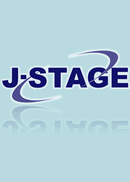We investigated the effectiveness of warm seawater as a treatment against two fouling organisms, the blown alga
Laminaria japonica and the mussel
Mytilus galloprovincialis, in multiple-harvest aquaculture of
Sargassum fusiforme. Thalli of
S. fusiforme fixed along four ropes (2 m long) were vertically aquacultured at 0-2 m depth in Okirai Bay, northeastern Japan, from October, 2006, to September, 2007. A warm seawater treatment (10-sec exposure at 45°C) was conducted twice for the all ropes during the germination period of
L. japonica (February, 2007). Thereafter, the same treatment was done monthly to two ropes during the settlement period of
M. galloprovincialis (May-August, 2007). The treatment had no negative effect on thallus growth of
S. fusiforme, and no thallus of
L. japonica was observed on any rope after the first treatment. This demonstrates that the warm seawater treatment is an effective countermeasure against fouling by
L. japonica. M. galloprovincialis began to appear along the all ropes in July, 2007. However, the density of this species along the ropes subjected monthly to warm seawater was significantly lower than along the ropes lacking this treatment, and the wet weight of the mussels was significantly lower at 1-2 m depth than at 0-1 m depth. Thus, the density and wet weight of mussels at 1-2 m depth along the treated ropes were only 38.7% and 51.2% of those at 0-1 m depth along the untreated ropes. The combination of warm seawater treatment and choice of aquaculture depth evidently can control the settlement and growth of
M. galloprovincialis.
抄録全体を表示
